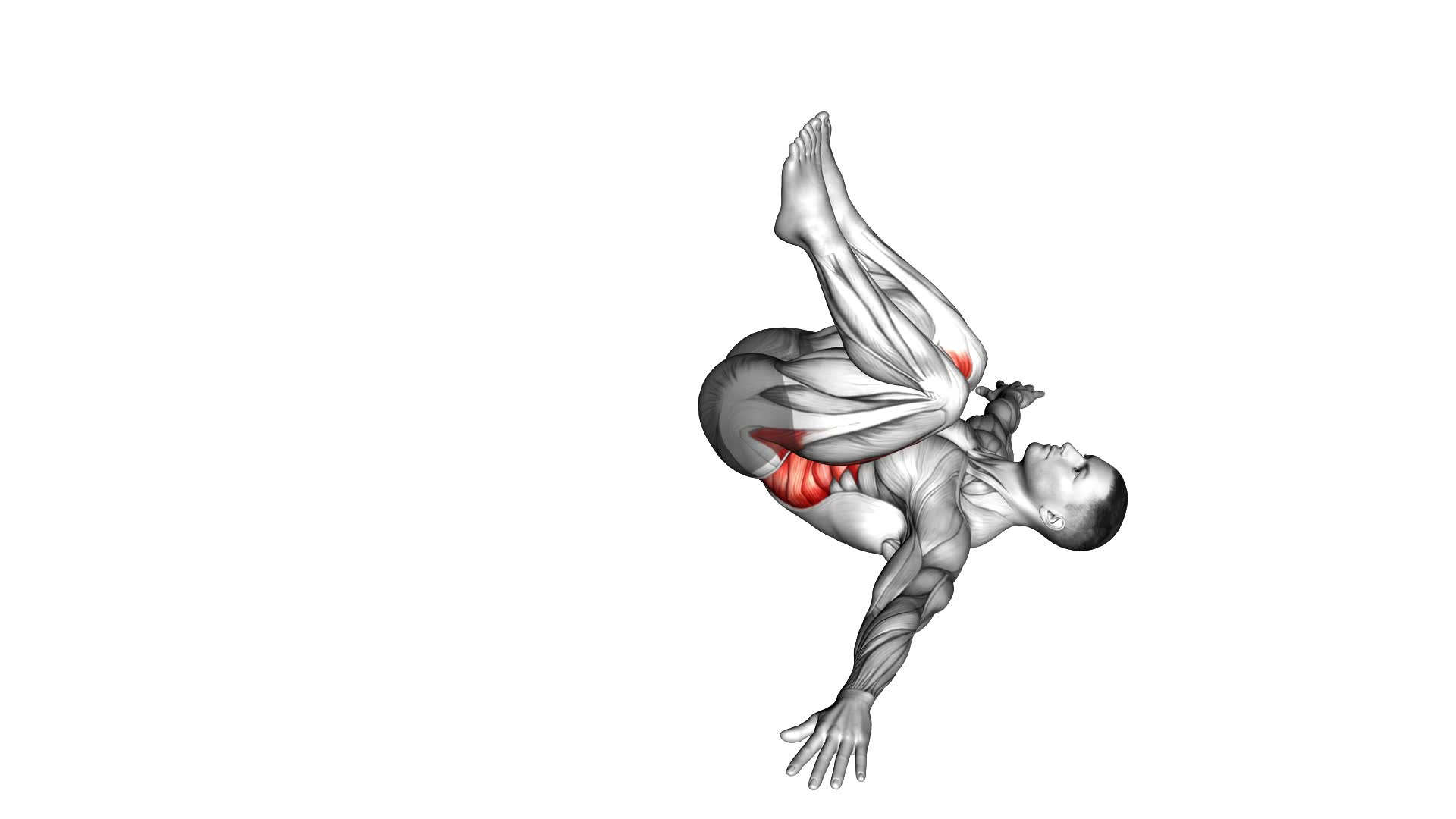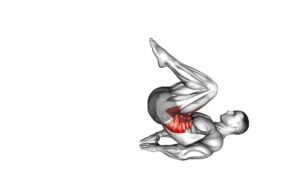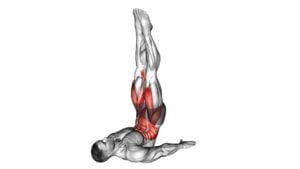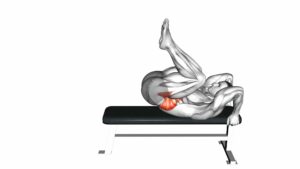Lying Leg Hip Raise on Floor – Video Exercise Guide & Tips

Are you looking for an effective way to strengthen your hips and core? Look no further than the lying leg hip raise on the floor.
Watch This Exercise Video
This exercise targets your glutes, hamstrings, and lower back while improving stability and balance.
In this video exercise guide, you'll find step-by-step instructions and helpful tips to ensure proper form and technique.
Whether you're a beginner or advanced, there are modifications and intensity-boosting tips for everyone.
Get ready to take your fitness to the next level!
Key Takeaways
- Lying Leg Hip Raise targets glutes, hamstrings, and lower back.
- Proper form and technique include engaging core and glutes, maintaining a straight line from knees to shoulders, and avoiding common mistakes.
- There are variations of Lying Leg Hip Raise, such as using a bench or stability ball, performing single-leg variations, and targeting different muscle groups for added variety.
- Beginners can modify the exercise by reducing the range of motion, focusing on building strength in core and glutes, and trying alternative exercises like glute bridge or bird dog.
Benefits of Lying Leg Hip Raise
You will experience several benefits from incorporating the lying leg hip raise into your workout routine. This exercise primarily targets the muscles of your glutes and hamstrings. By engaging these muscles, you can strengthen and tone your lower body, improving your overall athletic performance and stability. Additionally, the lying leg hip raise is a compound exercise that works multiple muscle groups simultaneously, making it an efficient choice for a full body workout routine.
Incorporating the lying leg hip raise into your routine can help you build a strong and functional posterior chain. This includes your glutes, hamstrings, and lower back muscles, which are essential for activities like running, jumping, and lifting. Strengthening these muscles can improve your power, speed, and explosiveness.
Furthermore, the lying leg hip raise activates your core muscles, including your abdominals and obliques, as they work to stabilize your body throughout the movement. This not only helps to improve your posture but also enhances your overall core strength and stability.
Proper Form and Technique
To perform the lying leg hip raise with proper form and technique, start by lying flat on your back on the floor. Bend your knees and place your feet flat on the ground, hip-width apart. Keep your arms by your sides, palms facing down. Engage your core and glutes as you lift your hips off the floor, while keeping your feet and shoulders planted firmly on the ground. Your body should form a straight line from your knees to your shoulders. Pause for a moment at the top of the movement, then slowly lower your hips back down to the starting position.
When performing the lying leg hip raise, there are a few common mistakes to avoid. One of the most common errors is using momentum to lift your hips, instead of relying on your core and glute muscles. Remember to engage these muscles and focus on controlled movements throughout the exercise. Another mistake is lifting your hips too high, which can strain your lower back. Aim to lift your hips until your body forms a straight line, and avoid overextending your spine.
There are also variations of the lying leg hip raise that you can try to target different muscle groups. For example, you can perform the exercise with your feet elevated on a bench or stability ball to increase the difficulty. You can also try single-leg variations by lifting one leg off the ground while performing the hip raise. These variations can help challenge your muscles in different ways and add variety to your workout routine.
Modifications for Beginners
For beginners, a helpful modification to the lying leg hip raise is to perform the exercise with a smaller range of motion. This modification allows you to focus on building strength in your core and glutes without overexerting yourself. To perform this modified version, start by lying on your back with your knees bent and feet flat on the floor. Engage your core and press your lower back into the ground. Then, lift your hips off the floor, squeezing your glutes, and raise your legs until they're perpendicular to the floor. Lower your legs back down slowly and repeat for the desired number of repetitions. This modified version reduces the strain on your hip flexors and makes the exercise more accessible for beginners.
If you find the lying leg hip raise too challenging, there are alternative exercises you can try. One option is the glute bridge, where you lie on your back with your knees bent and lift your hips off the floor, squeezing your glutes at the top. Another alternative is the bird dog exercise, where you start on all fours and extend one leg and the opposite arm, engaging your core to maintain balance.
Tips for Increasing Intensity
To increase the intensity of the lying leg hip raise, incorporate resistance by using a weight or resistance band. Here are some tips for increasing the intensity of this exercise:
- Advanced variations: Once you have mastered the basic lying leg hip raise, you can try some advanced variations to challenge your muscles even more. One variation is to perform the exercise with your legs straight, instead of bent. Another variation is to lift one leg off the ground while performing the exercise, alternating between legs.
- Incorporating resistance bands: Resistance bands are a great tool to add resistance to the lying leg hip raise. Simply wrap the resistance band around your thighs or ankles and perform the exercise as usual. The resistance from the band will make the exercise more challenging and help to strengthen your muscles further.
- Increasing weight: If you prefer to use weights, you can hold a dumbbell or weight plate on your hips while performing the exercise. This added weight will increase the intensity and make the exercise more effective in targeting your glutes and hamstrings.
- Adding tempo and reps: Another way to increase the intensity is to slow down the movement and perform each repetition with control. You can also increase the number of reps you perform in each set to further challenge your muscles.
Incorporating these tips into your lying leg hip raise routine will help you increase the intensity and continue to progress in your fitness journey.
Common Mistakes to Avoid
Avoid these common mistakes when performing the lying leg hip raise on the floor to ensure you're executing the exercise with proper technique.
One common mistake is failing to maintain a neutral spine. It's important to keep your back flat against the floor throughout the movement. Avoid arching your back or lifting your hips too high, as this can put unnecessary strain on your lower back. To maintain a neutral spine, engage your core and focus on pressing your lower back into the floor.
Another mistake to avoid is using momentum to lift your legs. This exercise is meant to target your hip muscles, so it's crucial to perform the movement with control. Avoid swinging your legs or using your momentum to lift them. Instead, focus on using your hip muscles to raise your legs off the floor.
Additionally, ensure that you aren't lifting your shoulders or upper body off the floor. Keep your upper body relaxed and grounded throughout the exercise. Lifting your upper body can put strain on your neck and shoulders, taking away from the effectiveness of the exercise.
Frequently Asked Questions
Can Lying Leg Hip Raises Help With Lower Back Pain?
Lying leg hip raises can be helpful in relieving lower back pain. By strengthening your core muscles, these exercises provide support to your back, reducing strain and discomfort.
In addition to targeting your lower back, they also engage your glutes, hamstrings, and hip flexors, promoting overall fitness and stability.
Incorporating lying leg hip raises into your routine can improve your posture, alleviate pain, and enhance your overall strength and flexibility.
How Often Should I Perform Lying Leg Hip Raises to See Results?
To see results from lying leg hip raises, it's important to perform them regularly. The frequency of your workouts will depend on your goals and fitness level. Generally, incorporating this exercise into your routine 2-3 times a week can be beneficial.
It's important to focus on proper form for lying leg hip raises to maximize their benefits. Engage your core, keep your back flat on the floor, and lift your hips using your glutes and hamstrings.
Can I Do Lying Leg Hip Raises if I Have a Knee Injury?
If you have a knee injury, it's important to be cautious when doing lying leg hip raises. This exercise can put strain on the knees, so modifications are recommended. You can try placing a pillow or folded towel under your knees for support. Additionally, it's best to consult with a healthcare professional or physical therapist for personalized guidance.
Despite the potential modifications, lying leg hip raises can still provide benefits like strengthening the core and glute muscles.
Are There Any Alternative Exercises That Target the Same Muscles as Lying Leg Hip Raises?
If you're looking for alternative exercises that target the same muscles as lying leg hip raises, there are a few options you can try.
One option is the glute bridge, where you lie on your back with your knees bent and lift your hips off the ground.
Another option is the clamshell exercise, where you lie on your side with your knees bent and open your top knee while keeping your feet together.
These exercises can help you work your glutes and hips without putting strain on your knees.
Can Lying Leg Hip Raises Help Improve My Posture?
Lying leg hip raises can definitely help improve your posture. By targeting your core muscles, these exercises strengthen your abdominal and lower back muscles, which play a key role in maintaining proper posture.
Performing lying leg hip raises with proper form is crucial for optimal results. Make sure to keep your back flat on the floor, engage your core, and lift your legs using your hip muscles.
Variations like bent knee raises or single leg raises can add variety and challenge to your workout routine.
Conclusion
In conclusion, the lying leg hip raise is an effective exercise for targeting the glutes and hamstrings. By following proper form and technique, beginners can gradually build strength and flexibility.
Increasing the intensity can be achieved by adding resistance or performing advanced variations. It's important to avoid common mistakes, such as using momentum or arching the back.
By incorporating this exercise into your routine, you can improve your lower body strength and enhance your overall fitness level.

Author
Years ago, the spark of my life’s passion ignited in my mind the moment I stepped into the local gym for the first time. The inaugural bead of perspiration, the initial endeavor, the very first surge of endorphins, and a sense of pride that washed over me post-workout marked the beginning of my deep-seated interest in strength sports, fitness, and sports nutrition. This very curiosity blossomed rapidly into a profound fascination, propelling me to earn a Master’s degree in Physical Education from the Academy of Physical Education in Krakow, followed by a Sports Manager diploma from the Jagiellonian University. My journey of growth led me to gain more specialized qualifications, such as being a certified personal trainer with a focus on sports dietetics, a lifeguard, and an instructor for wellness and corrective gymnastics. Theoretical knowledge paired seamlessly with practical experience, reinforcing my belief that the transformation of individuals under my guidance was also a reflection of my personal growth. This belief holds true even today. Each day, I strive to push the boundaries and explore new realms. These realms gently elevate me to greater heights. The unique combination of passion for my field and the continuous quest for growth fuels my drive to break new ground.







